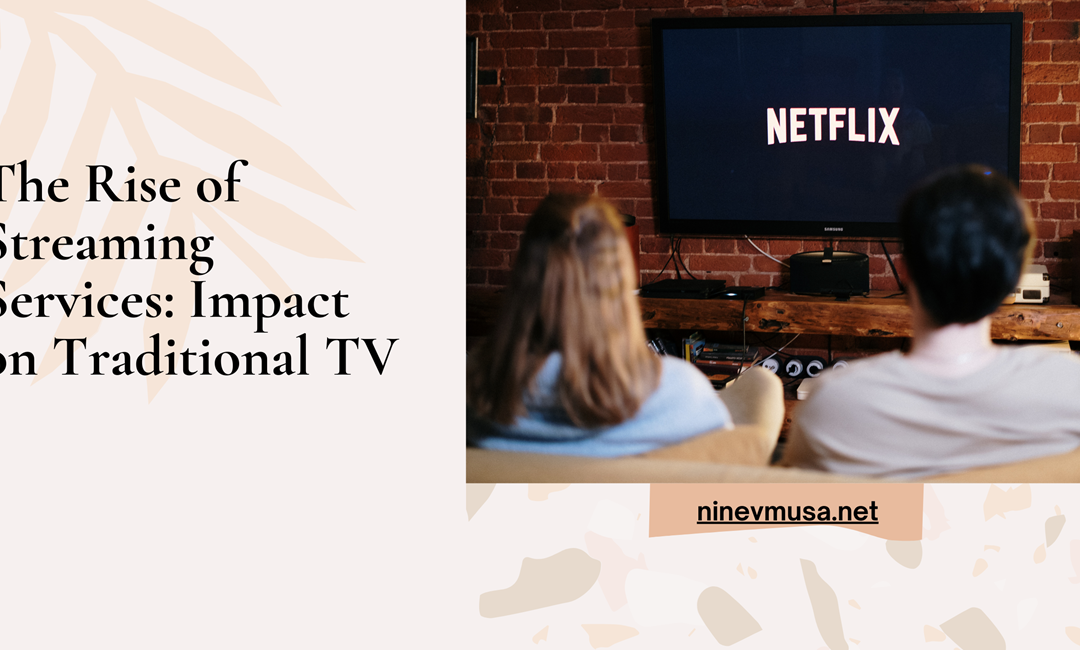The television landscape has undergone a seismic shift with the advent of streaming services. Platforms such as Netflix, Amazon Prime Video, Disney+, and Hulu have revolutionized how audiences consume content, significantly impacting traditional TV networks and cable providers. This transformation is multifaceted, affecting viewer habits, industry economics, and the nature of content production.
One of the most notable impacts of streaming services is the change in viewer habits. Traditional TV viewing schedules, dictated by network programming and time slots, are increasingly being replaced by the on-demand, binge-watching culture promoted by streaming platforms. Viewers now have the freedom to watch what they want, when they want, and how they want, without the constraints of scheduled programming. This shift has led to a decline in live TV viewership and a corresponding increase in time spent on streaming platforms. According to a 2023 Nielsen report, streaming now accounts for over 30% of total TV usage, surpassing broadcast and cable TV.
The convenience and flexibility offered by streaming services have also influenced the types of content being produced. Traditional TV networks typically focus on broad-appeal shows that can attract large audiences, but streaming platforms cater to niche markets and diverse demographics. This has resulted in a proliferation of content that is more varied and inclusive, addressing specific interests and cultural backgrounds. Shows like “The Crown,” “Stranger Things,” and “The Mandalorian” have achieved global success by tapping into unique storytelling and high production values that may not have found a home on traditional TV.
From an economic standpoint, the rise of streaming services has disrupted traditional TV advertising and subscription models. Cable TV, which once relied heavily on advertising revenue and bundled subscription packages, is now facing competition from the lower-cost, ad-free, or ad-supported options offered by streaming platforms. This has led to a phenomenon known as “cord-cutting,” where consumers cancel their cable subscriptions in favor of streaming services. A study by eMarketer found that by the end of 2023, the number of U.S. households with cable TV subscriptions had dropped by 25% compared to a decade earlier.
Streaming services have also democratized content production. With lower barriers to entry and the ability to reach global audiences, creators have more opportunities to showcase their work. This has led to an influx of independent productions and international content, further enriching the viewing experience. For instance, the global success of series like “Money Heist” from Spain and “Squid Game” from South Korea highlights how streaming platforms can elevate international shows to worldwide prominence.
However, the rise of streaming services is not without challenges. The market has become increasingly saturated, with new entrants like Apple TV+, Peacock, and HBO Max vying for audience attention. This competition has led to the fragmentation of content across multiple platforms, requiring viewers to subscribe to several services to access their favorite shows. Additionally, traditional TV networks are adapting by launching their own streaming platforms, such as NBC’s Peacock and CBS All Access (rebranded as Paramount+), creating a complex and competitive ecosystem.
Despite these challenges, the influence of streaming services on traditional TV is undeniable. They have pushed the industry towards more innovative and diverse content, altered economic models, and changed how audiences engage with media. For traditional TV to remain relevant, it must continue to evolve, embracing the technological advancements and shifting viewer preferences that streaming services have introduced. This might involve integrating more flexible viewing options, developing unique and high-quality content, and finding new ways to engage with audiences in a rapidly changing digital landscape.
The rise of streaming services marks a new era in television, one characterized by greater viewer autonomy, diverse content offerings, and a transformed economic model. As the lines between traditional TV and streaming continue to blur, the future of entertainment will likely see a more integrated and dynamic media environment driven by the ever-evolving demands of global audiences.

